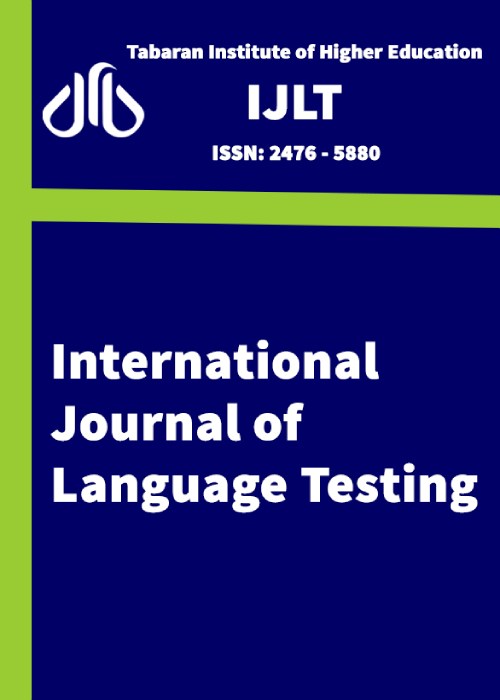فهرست مطالب
International Journal of Language Testing
Volume:9 Issue: 2, Oct 2019
- تاریخ انتشار: 1399/06/09
- تعداد عناوین: 3
-
Pages 29-43
Although group dynamic assessment (GDA) has been gaining attention over the recent decade, its applicability in online context has been left rather underexplored. Hence, the current study examined the effects of GDA on developing EFL learners’ written grammatical accuracy in the online context of ‘Telegram’. To this aim, 60 Iranian EFL students whose age ranged from 14 to 18 years old were assigned randomly into two groups, namely GDA (N=30) and Non-GDA (N = 30). Initially, both groups wrote an essay on the same topic taken from Preliminary English Test (PET) as the pre-test. Afterwards, both groups wrote on seven writing tasks and shared them in their groups on Telegram. The students in the GDA group were provided with graduated and contingent feedback following a concurrent interactive approach. That is, the teacher offered a gamut of feedback according to the responsiveness of the students to fix errors. On the other hand, the non-GDA group only received direct corrective feedback without being afforded the opportunity to interact over their errors. Finally, both groups revised their own last essays as the first posttest and also wrote an essay on a new task. Results of the study indicated that the GDA group significantly outperformed the Non-GDA group in terms of gains measured by both revision and the new task. EFL teachers and teacher educators can be the beneficiaries of the current study to enrich their online sessions with more GDA-based feedback.
Keywords: Online Group Dynamic Assessment (GDA), Non-GDA, Zone of Proximal Development (ZPD), Writing, Grammatical Accuracy -
Pages 44-55
In this study the validity of partial dictation as a measure of overall language proficiency was examined. Two partial dictation tests along with a C-Test, a cloze test, and a reading comprehension test, as criterion measures, were administered to a group of Iranian EFL learners. The coefficients of correlation between partial dictation and criterion measures were computed. Correlations revealed that partial dictation highly correlates with the cloze test, the C-Test, and the reading comprehension test. Principal components analysis showed that all the variables (four C-Test passages, two dictation passages, one cloze passage, and one reading comprehension passage) formed one single factor which explained 58% of the variance. All the variables had high loadings on the factor. These findings were interpreted as evidence of the similarity of the construct measured by partial dictation and other measures employed in the study. Desiderata for future research and potential applications of partial dictation in foreign language testing and teaching are discussed.
Keywords: Dictation, partial dictation, C-Test, reduced redundancy tests, validation 1 -
Pages 56-81
This study examined the MSRT (MCHE) scores’ dependability by considering different sources of variations including persons, items, sections, gender, and fields of study. The interactions among these variances were also investigated. To that end, four research questions were proposed. 1600 pre-intermediate to intermediate participants took part in this study. The MSRT (MCHE) exam consists of three sections including listening comprehension, structure and written expression, and reading comprehension. To examine the effects of each variance component in isolations and with respect to one another, some sort of generalizability studies were conducted. The results showed that the MSRT (MCHE) scores were highly reliable and the items within a section varied greatly in difficulty. It was also turned out that gender and its interactions with items and sections were statistically insignificant. In fact, the test takers’ proficiency differed considerably across items and somehow across sections, but not much due to the gender. The findings also showed that the variance component due to subject fields was somehow slight and all the test takers regardless of their subject fields performed the same. The applications and recommendations for further investigations were also highlighted.
Keywords: CTT, G-Theory, Dependability, G-Study, D-Study


